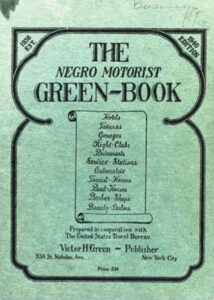 By Ricky Tyus
By Ricky Tyus
The Truth Travel Consultant
The GREEN BOOK with its list of hotels, boarding houses, restaurants, beauty shops, barber shops and various other services can most certainly help solve your travel problems. It was the idea of Victor H. Green, the publisher, who, in introducing the Green Book, said it was an attempt to save the travelers of his race “as many difficulties and embarrassments as possible.”
The Negro Motorist Green Book (at times styled The Negro Motorist Green-Book or titled The Negro Travelers’ Green Book) was an annual guidebook for African-American roadtrippers, commonly referred to simply as the Green Book.
It was originated and published by New York City mailman Victor Hugo Green in the United States from 1936 to 1966, during the era of Jim Crow laws , when open and often legally prescribed discrimination against non-whites was widespread. But because the emerging African-American middle class became car owners Green expanded the coverage in his book from the New York area to much of North America, he also founded a travel agency.
Many blacks took to driving, in part to avoid segregation on public transportation. As the writer George Schuyler put it in 1930, “all Negroes who can do so purchase an automobile as soon as possible in order to be free of discomfort, discrimination, segregation and insult.”[1] Black Americans employed as athletes, entertainers and salesmen also traveled frequently for work purposes.
African American travelers faced a variety of dangers and inconveniences, such as white-owned businesses refusing to serve them or repair their vehicles, being refused accommodation or food by white-owned hotels, and threats of physical violence and forcible expulsion from whites-only “sundown towns.” Green founded and published The Negro Motorist Green Book to tackle such problems, compiling resources “to give the Negro traveler information that will keep him from running into difficulties, embarrassments and to make his trip more enjoyable.”
From a New York-focused first edition published in 1936, Green expanded the work to cover much of North America, including most of the United States and parts of Canada, Mexico, the Caribbean and Bermuda. The Green Book became “the bible of black travel during Jim Crow,” enabling black travelers to find lodgings, businesses, and gas stations that would serve them along the road. It was little known outside the African American community. Shortly after passage of the Civil Rights Act of 1964, which outlawed the types of racial discrimination that had made the Green Book necessary, publication ceased and it fell into obscurity.
